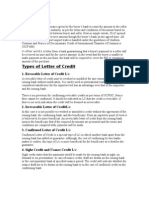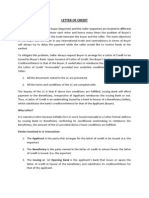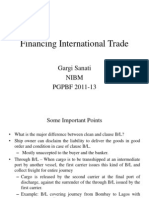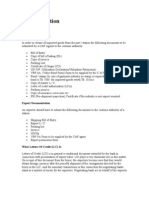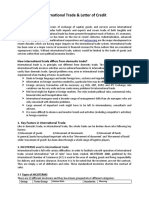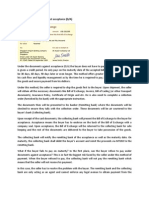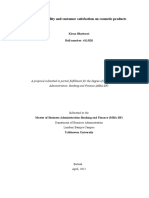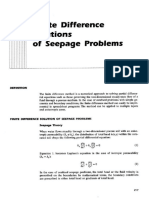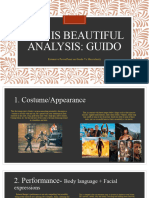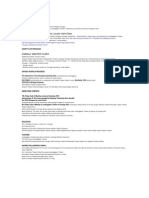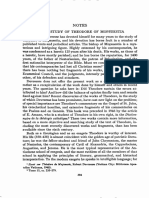0% found this document useful (0 votes)
113 views5 pagesCaselet - LC: The Journey of The LC
M/S Auto India is a public limited company that manufactures SUVs in a technical collaboration with General Motors. It has established a manufacturing base in Pune, India on 250 acres of land with a total project cost of Rs. 1500 crores. M/S Auto India imports car engine parts from General Motors in Detroit through letters of credit issued by Global Bank, Pune Branch. Global Bank issued an irrevocable negotiable letter of credit for USD 100,000 in favor of General Motors for the import of 50 car engine units at USD 2000 per unit. The letter of credit transaction was processed through the issuing, advising, negotiating and reimbursing banks as outlined.
Uploaded by
Abhi JainCopyright
© © All Rights Reserved
We take content rights seriously. If you suspect this is your content, claim it here.
Available Formats
Download as DOCX, PDF, TXT or read online on Scribd
0% found this document useful (0 votes)
113 views5 pagesCaselet - LC: The Journey of The LC
M/S Auto India is a public limited company that manufactures SUVs in a technical collaboration with General Motors. It has established a manufacturing base in Pune, India on 250 acres of land with a total project cost of Rs. 1500 crores. M/S Auto India imports car engine parts from General Motors in Detroit through letters of credit issued by Global Bank, Pune Branch. Global Bank issued an irrevocable negotiable letter of credit for USD 100,000 in favor of General Motors for the import of 50 car engine units at USD 2000 per unit. The letter of credit transaction was processed through the issuing, advising, negotiating and reimbursing banks as outlined.
Uploaded by
Abhi JainCopyright
© © All Rights Reserved
We take content rights seriously. If you suspect this is your content, claim it here.
Available Formats
Download as DOCX, PDF, TXT or read online on Scribd
/ 5































